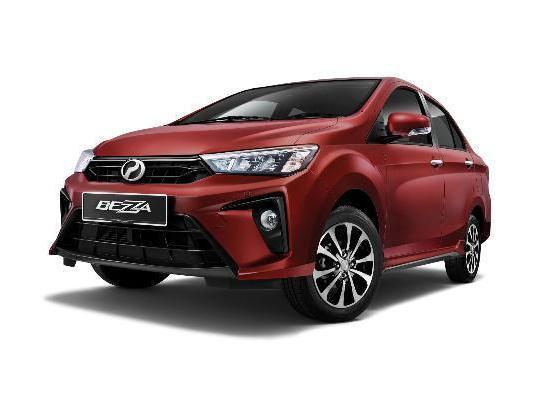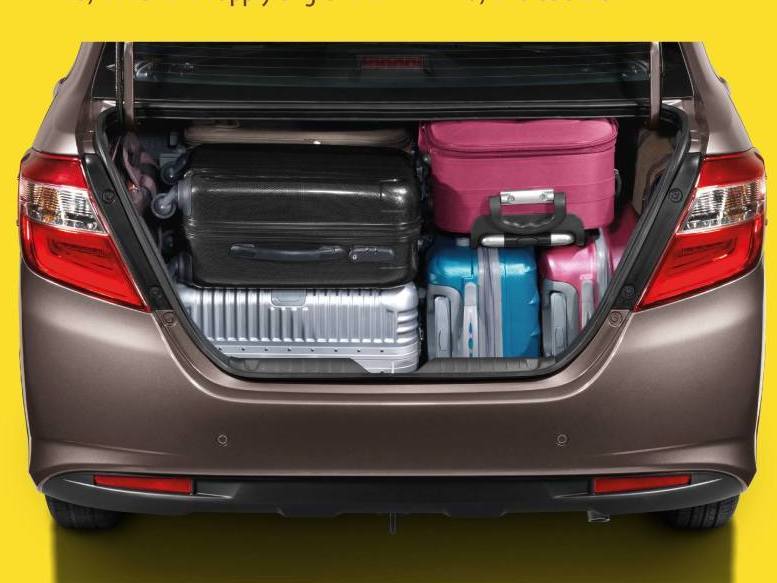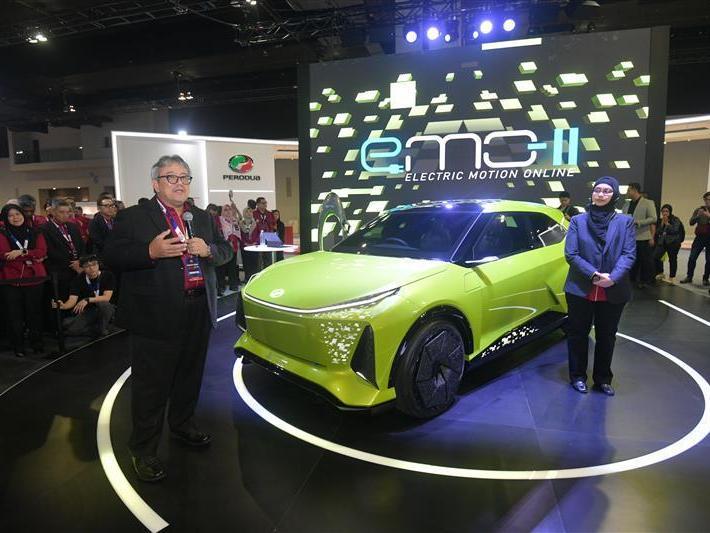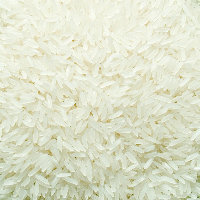Q
how many cc perodua bezza
So, let's talk about the 2024 Perodua Axia's pricing in Malaysia. The latest model ranges from RM38,600 to RM49,500, depending on which of the four 1.0L variants you go for: Standard G, SE, Style, or AV. The base Standard G sticks with a 5-speed manual, while the rest get a 4-speed auto. Across the board, you're looking at dual airbags, ABS, and ISOFIX as standard. Step up to the range-topping AV, and you'll score the ASA 3.0 advanced safety suite – that's forward collision warning and automatic emergency braking included.
What makes the Axia Malaysia's top-selling entry-level ride? It's all about that impressive fuel economy (21km/L official figure) and wallet-friendly maintenance costs. Plus, it's built on the DNGA platform, which boosts body rigidity, and it bagged a 3-star ASEAN NCAP rating back in 2023. If you're thinking of picking one up, definitely head to an authorized dealer for a test drive to feel the differences between trims. And keep an eye out for any government tax incentives on energy-efficient vehicles – this could be a solid pick for young families or first-time buyers watching their budget.
Special Disclaimer: This content is published by users and does not represent the views or position of PCauto.
Related Q&A
Q
What is the fuel consumption of Perodua Bezza 2018?
The fuel efficiency of the 2018 Perodua Bezza varies depending on the engine configuration. The official fuel consumption figure for the 1.0-liter 1KR-VE three-cylinder engine is 22.8 km per liter (approximately 4.39 liters/100 km), while the 1.3-liter 1NR-VE four-cylinder version delivers 21.3 km per liter (around 4.69 liters/100 km). These figures are based on Malaysian road standard test conditions, and actual fuel consumption may vary slightly depending on driving habits, road conditions, and vehicle maintenance status. As an entry-level sedan focused on affordability and practicality, the Bezza's fuel-saving performance benefits from its lightweight body design and efficient engine tuning, making it particularly suitable for city commuting. To further optimize fuel efficiency, it's advisable to keep up with regular maintenance, use the appropriate viscosity oil, and avoid aggressive driving behaviors like rapid acceleration or sudden braking. In the same vehicle class, fuel efficiency is typically influenced by factors such as engine technology, body weight, and transmission matching, so it's worth comparing the technical features of different brands when making a purchase decision.
Q
What engine is in the 2018 Bezza?
The 2018 Perodua Bezza comes with two naturally aspirated engine options: a 1.0-liter and a 1.3-liter. The 1.0-liter 1KR-VE three-cylinder engine puts out 51 kW of maximum power and 91 Nm of peak torque, while the 1.3-liter 1NR-VE four-cylinder unit delivers 73 kW of max power and 121 Nm of peak torque. Both engines are paired with either a four-speed automatic transmission or a five-speed manual gearbox to suit different driving preferences. These engines are known for their fuel efficiency and reliability, making them especially good for city commuting. The 1.3-liter version stands out with better performance, ideal for drivers who want a bit more pep. The upside of naturally aspirated engines here is their simple construction and low maintenance costs, perfect for budget-conscious buyers who value practicality. Plus, both engines met the emission standards back then, showing Perodua's solid tech in the small car segment. If you're looking at a used Bezza, the 2018 model's engine is steady and routine upkeep is easy, making it a really good value pick.
Q
Is Bezza safe?
The Perodua Bezza, one of Malaysia's best-selling entry-level sedans, delivers safety features that are pretty much par for the course in its price bracket. The base models come with dual airbags, ABS with EBD, while the higher trims step things up with active safety kit like VSC (Vehicle Stability Control) and TRC (Traction Control). It scored a 4-star rating in ASEAN NCAP crash tests, which means the body structure offers decent protection in a collision.
Now, it's worth keeping in mind that the Bezza is a lighter car with a front-wheel-drive layout. That can make it feel a bit less planted than more premium models at higher speeds or on slippery roads, so keeping a sensible speed and leaving a good safety gap is always a smart move.
For budget-conscious buyers, the Bezza's safety package covers the basics for city driving just fine. But if you want a bit more peace of mind, adding extras like rear parking sensors or a dashcam wouldn't hurt. And with Malaysia's rainy weather, don't sleep on tire maintenance—regularly checking tread depth and pressure goes a long way in keeping you safe. After all, even the best safety systems rely on good tire grip to work properly.
Q
Is Perodua a Toyota brand?
Perodua isn't actually a Toyota brand, but there's definitely a tight-knit partnership between the two. Perodua's Malaysia's homegrown automaker, founded back in 1993, while Toyota needs no introduction as the famous Japanese automotive giant. When it comes to tech, parts supply, and manufacturing, Perodua has deep-rooted collaborations with Toyota and its subsidiary Daihatsu. Take their models, for example—several Perodua vehicles ride on Daihatsu platforms and use their powertrains. On the flip side, Toyota has also rolled out models in Malaysia that share production lines with Perodua, like the Toyota Rush and Perodua Aruz, which are platform twins. This kind of collaboration is pretty standard in the auto industry; it helps local brands cut costs and boost their technical know-how, while letting international players better adapt to the local market. For Malaysian consumers, Perodua cars are usually known for being budget-friendly and cheap to maintain, whereas Toyota stands out for its reliability and global after-sales network. Both have their strengths, so buyers can pick the one that best fits their needs.
Q
Does Bezza save fuel?
Yeah, the Perodua Bezza has definitely made a name for itself as a fuel-sipper, perfect for zipping around Malaysia's daily commutes. Under the hood, you'll find those efficient 1.0L and 1.3L Dual VVT-i engines, and paired with its lightweight build, the official figures say it can sip as little as around 4.0 liters per 100 kilometers. In real-world driving, if you keep a steady throttle and stick to sensible speeds, you can even nudge that fuel efficiency a bit further. Plus, the Bezza comes with this ECO driving mode indicator to help you get into more economical habits behind the wheel. For folks who prioritize fuel economy, it's a solid pick.
In the Malaysian market, rivals like the Proton Saga also put up a good fight when it comes to miles per liter, but the Bezza's compact size and tried-and-tested powertrain really shine when you're navigating city streets. My advice? Before you sign on the dotted line, check out the Malaysian Energy Efficient Vehicle (EEV) certifications and think about how you actually drive. Oh, and don't sleep on regular maintenance and keeping those tires properly inflated – they can make a big difference to how much fuel you end up burning, too.
Q
Is Bezza good for long distances?
The Perodua Bezza, one of Malaysia's top picks for budget-friendly sedans, is worth a look if you're thinking about long drives. Now, both the 1.0L and 1.3L engines are all about saving fuel, but the 1.3L Dual VVT-i paired with that 4AT gearbox? It does a better job keeping power steady when you're cruising on the highway. And with an official fuel consumption figure of 22.5km/L, those long trips won't hit your wallet as hard at the pump.
Safety-wise, it's got a solid ASEAN NCAP 5-star rating, so your passengers are covered. The boot's a real standout too – 508 litres is plenty to swallow all the family luggage for a road trip. That said, the cabin insulation is on the thinner side, so you will notice more wind noise once you pick up speed. A quick tip: keep an eye on your tyre pressure and cooling system regularly to make sure it stays reliable for those longer hauls.
For families on a tight budget who need to clock up the kilometers between states, the Bezza makes a lot of sense. It delivers where it counts: fuel efficiency, space, and the basic safety kit. If a quieter ride is high on your list, though, you might want to think about adding some aftermarket sound deadening strips or maybe stepping up to a higher-spec model.
Q
Is Bezza using a Toyota engine?
The Perodua Bezza doesn't actually use Toyota engines. Instead, it's powered by Perodua's own in-house developed 1.0L and 1.3L DVVT engines. These belong to Perodua's EEV (Energy Efficient Vehicle) lineup and feature Dual Variable Valve Timing technology, which is all about boosting fuel efficiency while still delivering decent power. The 1.0L puts out 67PS, and the 1.3L ups that to 94PS. You can pair either engine with a 4-speed automatic or a 5-speed manual gearbox.
Now, even though Perodua and Toyota do have a partnership and share some tech platforms on certain models, the Bezza's engines are strictly Perodua-designed and built – no direct Toyota engine swaps here. For Malaysian buyers, the Bezza's main draws are its affordability and practicality. It really shines as a city runabout or a family car. Plus, Perodua's got a solid after-sales network across the country, so getting it serviced or repaired is pretty hassle-free.
If you're into engine tech, it's worth diving deeper into how DVVT works. Basically, it optimizes when the valves open and close, which in turn ramps up engine efficiency. It's a common fuel-saving tech you'll find in lots of car brands these days.
Q
Is Perodua Bezza worth buying?
The Perodua Bezza, one of Malaysia's best-selling entry-level sedans, is definitely worth a look – especially if you're on a tight budget but still want something practical. Under the hood, you've got two efficient engine options: 1.0L and 1.3L, both packing Dual VVT-i tech. Fuel economy is a real strong suit here; official figures claim the 1.0L model sips fuel as low as 21.1km/L, making it perfect for city driving. Inside, it's surprisingly roomy for its class, and that 508-liter trunk? More than enough for your average family's daily grind.
Safety-wise, all Bezzas come standard with ABS+EBD, dual airbags, and ISOFIX child seat anchors. Step up to the higher trims, and you'll even get Vehicle Stability Control (VSC) and Traction Control (TRC) – nice to have. The interior is mostly hard plastics, sure, but that's par for the course at this price point, and the build quality feels solid enough. The infotainment system covers the basics too, with Bluetooth and USB connectivity.
A big plus for Perodua is their widespread after-sales network, which means servicing and repairs won't break the bank – that makes it a solid long-term value proposition. When you factor in resale value, the Bezza also holds its own against rivals, which is a big bonus if you think you might upgrade down the line.
Now, if you're craving more power or a fancier spec sheet, you might need to stretch your budget a bit. But when you balance price, fuel efficiency, space, and the brand's reputation for reliability, the Bezza remains a seriously competitive choice in the Malaysian market.
Q
How much is Bezza 2020 in Malaysia?
The 2020 Perodua Bezza's pricing in Malaysia varies depending on the trim and specs. The base 1.0L Standard G with a manual gearbox starts around RM34,000, while the range-topping 1.3L Premium X with auto transmission goes for about RM50,000. Of course, actual prices might fluctuate a bit based on dealer promotions or, for used models, their overall condition.
This little econobox has made a name for itself with its impressive fuel efficiency and practical nature. Under the hood, you'll find either a 1.0L or 1.3L engine, and it comes packed with safety features like VSC (Vehicle Stability Control) – making it a solid pick for budget-conscious families or first-time car buyers.
It's worth pointing out that the 2020 model is a facelift, so it gets some nice upgrades over the earlier versions. Think things like a newly designed front bumper and fresh wheel designs to keep it looking current.
If you're shopping the used car market, keep in mind that mileage and service history will really affect the asking price. I'd definitely recommend checking out Perodua's official certified pre-owned channels or reputable platforms to get real-time market rates. And don't forget to cross-shop with competitors like the Proton Saga – it never hurts to compare before making your final decision!
Q
What Segment is Perodua Bezza?
The Perodua Bezza is a four - door sedan in the A - segment. It is mainly targeted at entry - level buyers in the mid - to low - price range in the Malaysian market, emphasizing affordability and low fuel consumption. Its body size (with an overall length of 4,150 mm) is smaller than that of B - segment sedans like the Toyota Vios and Honda City. However, it has an edge in price, starting from around RM34,000, which meets the local consumers' demand for a cost - effective commuter car.
Despite its relatively small size, the Bezza still offers engine options of 1.0L (1KR - VE) and 1.3L (1NR - VE), making it suitable for city commuting. It is easier to handle and park on congested roads, such as those in the Kuala Lumpur city center. Its competitors in the same segment include the Proton Saga (an A - segment sedan), while the higher - end B - segment market is occupied by Perodua's own Aruz (an SUV) and Daihatsu/Toyota models.
Although it may not stand out in terms of size and power, the Bezza remains one of the best - selling A - segment sedans in Malaysia, thanks to its low maintenance costs and the high resale value of the Perodua brand.
Popular Cars
Model Year
Car Compare
Car Photo
Latest Q&A
Q
What is the rpm of 180 hp motor?
The powerband of a 180-horsepower engine varies by model and intended design. Naturally aspirated engines typically hit peak power at 6,000-7,000 rpm, while turbocharged units like common 1.5T or 2.0T engines often deliver maximum punch between 5,000-6,000 rpm.
Remember the horsepower equation "HP = Torque × RPM ÷ 5252"? That's why modern turbo engines feel punchier at lower revs while sipping less fuel - they're making the same power with fewer revolutions.
Real talk though: you'll rarely need to wring it out to redline in daily driving. Most scenarios call for just 3,000-4,000 rpm for decent shove. Holding high revs constantly? That's just wearing out your engine faster.
Brands tune these differently too - some prioritize low-end grunt for city crawling, while others build power up top for highway passing. Match your right foot's personality when choosing.
Q
What is the rpm of a 10 hp motor?
The RPM of a 10-horsepower (hp) motor depends on its type and intended use. Typically, standard AC induction motors run between 1,450 and 2,900 RPM, while DC or variable-frequency motors may have a wider range—check the nameplate or technical manual for specifics.
In automotive applications, like small generators or auxiliary systems, a 10-hp motor’s speed is often matched to the vehicle’s needs. For example, certain booster pumps or cooling fans might operate between 1,800 and 3,600 RPM.
Keep in mind that horsepower (hp) and RPM aren’t directly linked. HP reflects power output, while RPM depends on factors like pole count and supply frequency (e.g., a 4-pole motor in a 50Hz region runs around 1,440 RPM). If you’re swapping or modifying a motor, always verify the torque curve and load requirements to avoid efficiency losses or damage.
Also, in EVs or hybrids, motors often run at much higher speeds (8,000 RPM or more), though these systems usually rate power in kilowatts (kW)—just remember 1 hp ≈ 0.746 kW for conversion.
Q
How to convert HP into RPM?
To convert horsepower (HP) to RPM, you need to understand their relationship—but there’s no direct conversion since HP measures power while RPM reflects crankshaft speed. Torque bridges the gap. The formula is:
**HP = (Torque × RPM) / 5252** (with torque in lb-ft).
Rearrange it to solve for RPM:
**RPM = (HP × 5252) / Torque**.
For example, an engine making 200 HP at 300 lb-ft of torque hits roughly 3500 RPM at that output.
Keep in mind:
- Engines have unique powerbands—peak HP and torque rarely align at the same RPM.
- Turbocharging, aspiration, and transmission gearing all alter how power translates to wheel speed.
- Real-world performance isn’t just about this math; check the dyno curve and drivetrain setup for the full picture.
Q
What is the rpm of a 60 hp motor?
A 60-horsepower engine's RPM range depends entirely on its design and application. For small gasoline engines, you're typically looking at 6,000-8,000 RPM to hit 60 hp. Diesel mills, with their torque advantage, can achieve the same power at just 3,000-4,500 RPM - check the manufacturer's power curve for exact figures.
Remember, horsepower doesn't scale linearly with RPM. Cylinder count, induction type (naturally aspirated vs. forced induction), and fuel delivery all play major roles. Take turbocharged engines - they'll deliver peak power at significantly lower revs.
For daily driving, most cars operate most efficiently in the 2,000-3,000 RPM sweet spot where power and fuel economy balance out. Want specifics on your ride? Crack open the owner's manual or hook up an OBD scanner. Tuning enthusiasts can always flash the ECU to alter power delivery, but be warned - that warranty won't honor itself, and reliability might take a hit.
Q
How many rpm is a 2 hp motor?
There’s no fixed direct relationship between a motor’s RPM and its horsepower (HP), as rotational speed depends on factors like motor design, load conditions, and power supply frequency. For example, a 2 HP AC motor under a 50Hz power standard (common in household or industrial use) typically has a synchronous speed of around 1500 RPM or 3000 RPM—determined by its pole count (4-pole or 2-pole)—though actual operating speed may drop slightly under load.
For DC or brushless motors, the RPM range can vary more widely, so always check the specs for the specific model. Application also plays a role: a 2 HP motor for pumps or fans usually runs at moderate speeds, while power tools may prioritize higher RPMs.
When selecting a motor, don’t just focus on power—consider torque, efficiency, and rated speed to match real-world needs. For precise figures, consult the manufacturer’s datasheet or a technical expert.
View MoreRelated News

Perodua Myvi and Bezza may undergo major upgrades in 2026
LienDec 24, 2025

All-New Perodua Bezza Coming 2025: Built on Advanced DNGA Platform
LienJun 4, 2025

How Much is the Perodua Bezza? Tips for Purchase and Cost-effectivness
LienMar 25, 2025

How big is the boot space of Bezza actually?
MichaelMar 12, 2025

What will the new Perodua Car look like in 2025? What kind of changes will they undergo?
LienMar 3, 2025
View More


















Pros
Cons